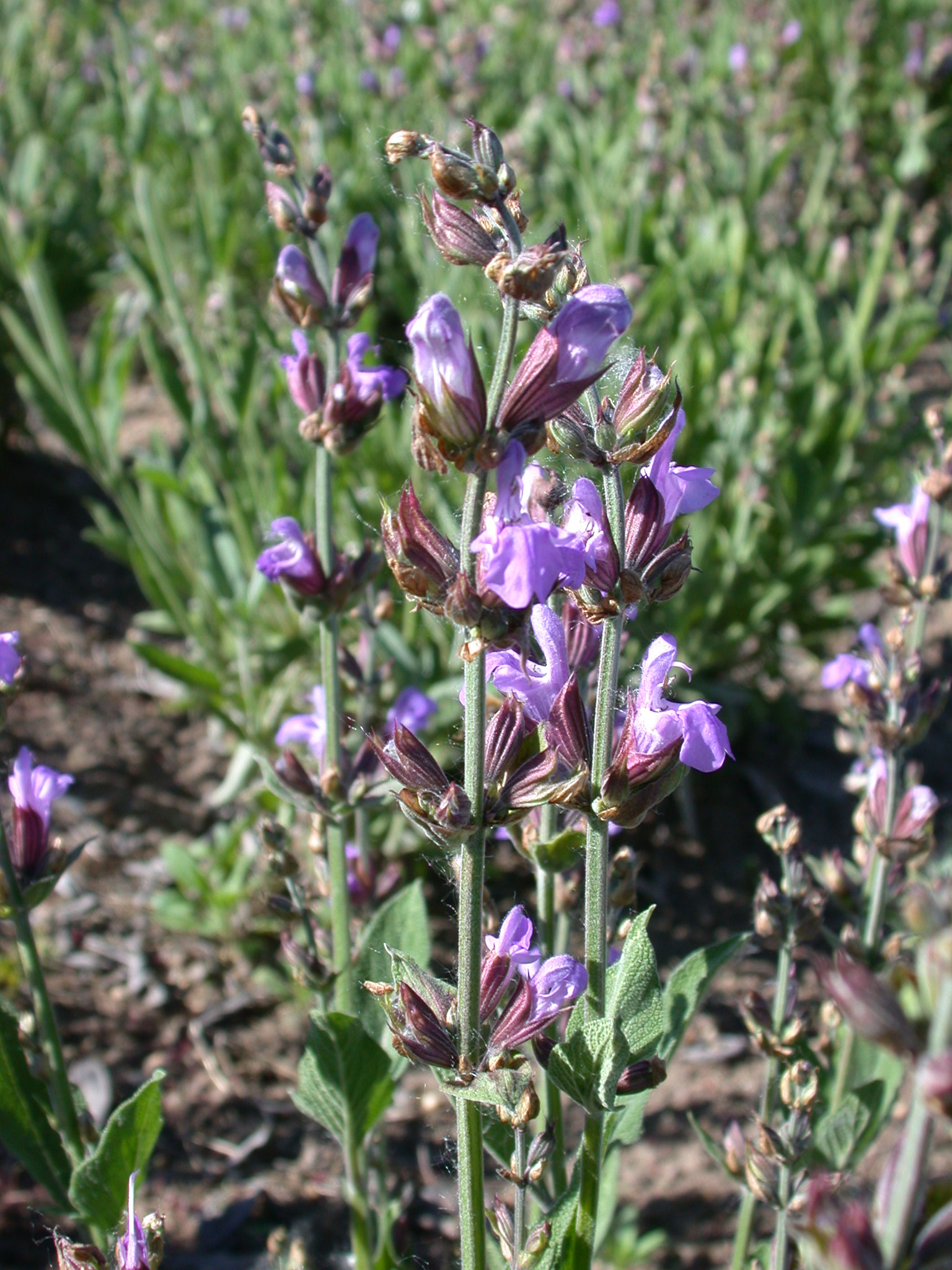Salvia officinalis L. - Sage
Salvia officinalis is a perennial, evergreen sub-shrub in Lamiaceae family (N). The root is strong, located deep under the soil surface, branched. The stem grows 50-80 cm tall, greyish-brown, wooden, in older plants it is branched. The young stems are cinerary, grey. The leaves are oblong, lanceolate, the lower leaves have stalks, in contrast with the upper located leaves. The leaf margins are crenate, the leaf surface is covered with hair densely. The flowers borne in compound inflorescences, the colour of the petals differ from purple, light blue to white or pink. The flowering time lasts from the end of May, to middle July. The fruits are globular, dark brown with white patch on them. Thousand seed weight is: 7.6-7.8 g.
Several subspecies are known. A Salvia officinalis subsp. lavandulifolia (Vahl.) Cuatr. has narrow, lanceolate leaves, its essential oil is free of thujone. Salvia officinalis subsp. minor Gams. has bigger, stalkless leaves (4-7 cm long, and 1-2 cm wide). Salvia officinalis subsp. major (syn. officinalis) Gams is stronger growing, with 5-10 cm long, 2-5 cm wide and hairy leaves.
Salvia officinalis is a Mediterranean plant, originates from the Northern coast of Mediterranean Sea. It grows well on warm, calcic soils. The drought tolerance of the plant is high.
The dried, whole or cut leaves, known as Salviae officinalis folium, are the drug of sage. It is described in Ph.Hg.VIII., ESCOP- and E-monographs: the minimum essential oil content is 15 ml/kg, in cut drug 10 ml/kg.
Sage contains 1-2.5 % essential oil, with alfa- and beta- thujone (30-50 %), borneol (6-14 %), cineol (10-15 %), camphor (6-10 %) and pinene (1-2 %) as main compounds. The daily consumption of sage drug is strictly limited, because of the carcinogen activity of thujone. The plant accumulates diterpenes, triterpenes, tannins (3-8 %) flavonoids (1-3 %), rosmarinic-, caffeic acid and phenolgylcosides too.
Sage drug has anti-inflammatory, bactericidal and antiviral activity. It is also efficient against abnormal perspiration, caused by increased thyroid activity or unbalanced nervous system. In folk medicine sage leaf was used for reduce bleeding (astringent activity), increase biliary excretion and relieve spasms.


